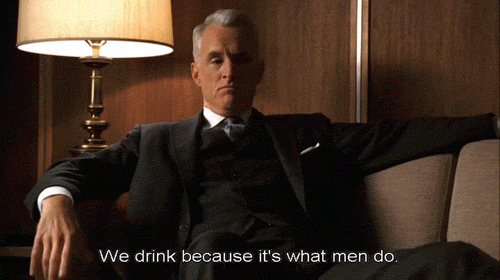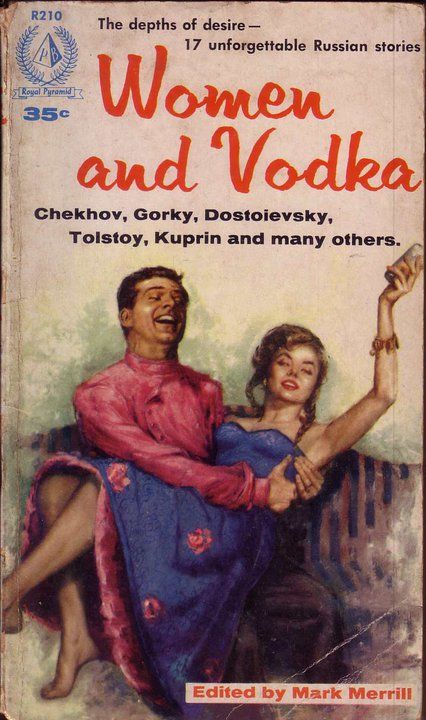The Glorious History Of The Vodka Martini: Shaken, Or Stirred
From James Bond to Roger Sterling, the iconic drink has a complex history.


Brought to you by
We’ve teamed up with Stolichnaya, THE Vodka, explore the coloured history of three of the most popular cocktails in the world. First up, THE Vodka Martini.
–
As is appropriate for an iconic drink, the Martini has a long and complex history.
While there were many different cocktails circulating under the name ‘Martini’ in the 1890s, the first thing that looks remotely like today’s Martini was the recipe for a ‘Marguerite’ given in the 1904 book Stuart’s Fancy Drinks and How to Mix Them, which called for two parts Plymouth (dry) gin, one part French (dry) vermouth, and a dash of orange bitters.
Versions of the Martini cocktail given after this date tend to cleave to the formula of dry gin and dry vermouth, and it was this version of the drink that became popular in the early twentieth century, before the prohibition of liquor in the United States (1920–1933).

Bath-time martini FTW.
Prohibition radically altered the world’s drinking tastes. Bartenders and well-heeled drinkers like Ernest Hemingway fled the US and brought cocktail culture to the rest of the world; the rest of the world, in return, gave cocktail culture a wider palette of ingredients to play with.
American drinkers developed a taste for lighter spirits, as their palates adapted to what was available (bathtub gin and lighter Canadian whiskeys bootlegged at home; London dry gin and white rum in more salubrious venues abroad). This primed American palates for vodka, which arrived in the States in 1934 but remained a niche interest until the early 1950s. (Vodka had been all the rage in Poland and Russia for centuries before.)
Swap the gin in a dry Martini for vodka et voilà – you have the Vodka Martini.
A Manly Drink For Manly Men

Move over, Roger Sterling: when it comes to Vodka Martinis on screen, you can’t avoid talking about James Bond. Bond even has his own take on the Vodka Martini – a concoction known as the Vesper. Bond recites the recipe to his bartender in the first Bond novel, Ian Fleming’s Casino Royale (1953):
“Three measures of Gordon’s, one of vodka, half a measure of Kina Lillet [a vermouth-like fortified aromatised wine]. Shake it very well until it’s ice-cold, then add a large thin slice of lemon peel.”
While the bond of Fleming’s novels will drink just about anything, the Bond of the films sticks with Vodka Martinis, “shaken, not stirred”. The cool elegance of the strong crystal-clear drink in its iconic v-shaped glass fits Bond’s debonair-yet-brutish persona like a glove.

Manly men have been quaffing Vodka Martinis ever since. Dean Martin and his Rat Pack drank so many Vodka Martinis at Chasen’s in Beverly Hills that bartender Pepe Ruiz invented a signature twist on the recipe for them: a combination of vodka, a splash of fino Sherry, and the oils from flamed orange zests.

A Manly Drink For Womanly Women
The Vodka Martini used to be known as the ‘silver bullet’ – a short sharp dose of hard liquor for an equally hard man. But, paradoxically, it became popular just as femininity was starting to have a profound effect on drinking culture.
 In the US and other Western countries, cocktail bars were traditionally reserved for men only; but during the profound social upheavals after World War II, women acquired a taste for the nightlife. Bars evolved to capture this emerging market, featuring exotic decor and very untraditional cocktails: think tiki bars, or fern bars.
In the US and other Western countries, cocktail bars were traditionally reserved for men only; but during the profound social upheavals after World War II, women acquired a taste for the nightlife. Bars evolved to capture this emerging market, featuring exotic decor and very untraditional cocktails: think tiki bars, or fern bars.
Vodka-based drinks were hugely popular in these new venues, and ever since vodka and other white spirits have been culturally coded as feminine, and brown spirits as masculine.
The Vodka Martini is therefore something of a paradox: it’s perceived as a manly drink, but it’s made from the least manly of ingredients. The good news is that a beautifully made Vodka Martini can be enjoyed by anyone, because we’re all over the tired gender stereotyping that goes on in bars, right?
Shaken or stirred?
Ever since Bond ordered his first Vesper shaken rather than stirred, debate has raged between Martini purists about the best way to make the drink. Unfortunately, there’s no definitive answer to the question.
Historically, early recipes for the Martini have varied between stirring and shaking, so tradition is no guide. There are advantages to both methods, too: a properly shaken cocktail (a hard shake with lots of ice) will chill a drink down to -15°C in fifteen seconds; to get down to the same temperature by stirring takes twice as long, and depends more on the quality and size of ice you’re starting with. Since cocktails are best enjoyed very cold, shaking has the advantage here. Stirring wins as far as visual appeal goes, though—a shaken drink will emerge cloudy with bubbles and festooned with tiny chips of ice, while a stirred drink will pour out looking like a jewel.
Rather than insisting that one method is the only right way, perhaps it’s better to follow the advice of David Embury in his classic book The Fine Art of Mixing Drinks: if you want a visually appealing Martini, stir. If you want it to be as cold as possible and don’t mind how it looks, shake. And if you don’t know which you prefer yet, you can always try it both ways.
As Bond himself says in the 2006 film version of Casino Royale, when asked if he wants his Vodka Martini shaken or stirred: ‘Do I look like I give a damn?’



Well look, James, you were a bit of a dick about this whole thing earlier…
–
THE Recipe
Courtesy of Distill, Adelaide.
Ingredients:
75ml Stoli Premium Vodka
10ml Dolin Vermouth
Lemon twist
Chipped ice
–
Directions:
1) Fill stirring beaker with chipped ice
2) Add 10ml of vermouth and stir through coating all the ice
3) Drain out excess vermouth
4) Add 75ml of vodka and stir until you reach your desired temperature and dilution
5) Double strain into a martini glass
6) Garnish with a lemon twist
–
Chad Parkhill is a Melbourne-based writer and editor who has written for The Australian, Killings, Meanjin and The Quietus. He is alcohol columnist for The Lifted Brow.
Feature image by Don LaVange, under a Creative Commons license on Flickr.

